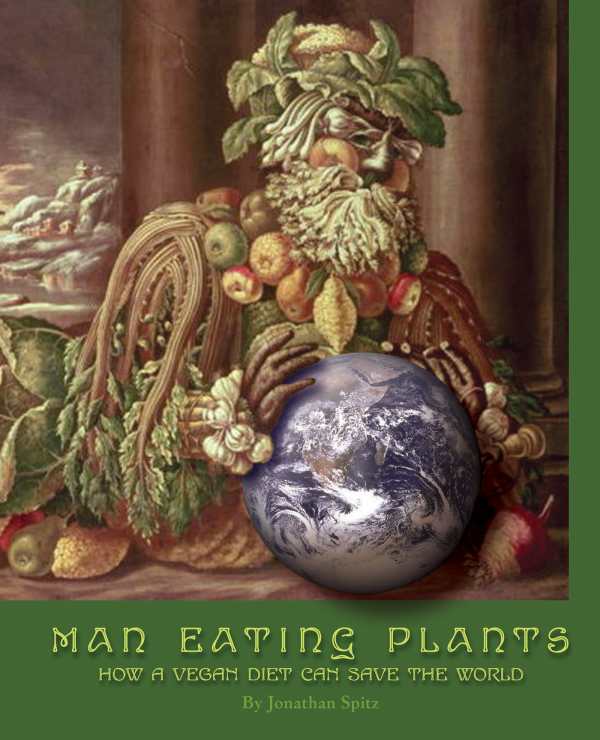
Man Eating Plants
How a Vegan Diet Can Save the World
Man Eating Plants is an ambitious survey of human dietary history that proposes a vegan solution to contemporary ills.
Using an ambitious combination of history, archaeology, and science, Jonathan Spitz’s Man Eating Plants argues that a vegan diet can save human health as well as Earth itself.
Man Eating Plants makes wide-ranging arguments in favor of a plant-based diet. It begins by applying a history of human diets in various regions over thousands of years to analyses of how those diets influenced human longevity and the ecological health of their regions. The second half of the book confronts contemporary problems, including animal cruelty, climate change, and diet-related human disease, demonstrating their links to animal-based diets. In both sections, the book confronts perhaps the most pressing issues of the twenty-first century: how to feed a world of eight billion plus people that is teetering on the edge of climate chaos without further damaging the planet. The answers provided in this book are embedded in the context of the long history of humanity’s successes and failures in both plant and animal agriculture.
Organized into seven sections, the book’s first 150 pages contain Spitz’s own writing, with limited quotations from outside authorities. Beginning in Part IV, numerous block quotations from academic research appear. The increasing inclusion of these lengthy blocks of text, some of which run for over a page, begins to overwhelm the book’s original writing.
At the same time, the book’s appeals to authorities like research studies and expert opinions are inconsistent. These are mentioned in a haphazard fashion rather than being cited in a systematic way that facilitates access and fact-checking. Tables and charts referred to in block quotations are not reproduced. Some historical information basic to the book’s arguments and some complex scenarios, such as those about ancient human dietary habits, are presented as facts, but without supporting evidence.
The book’s tone is informative, delivering reams of data covering human population growth, changing food sources, and changes in domestic animal population, among other subjects. The data is presented for all inhabited continents and often covers thousands of years. But the weight of all this information may be too heavy for general audiences, and some of it, as with distinctions between breeds of sheep, is not sufficiently connected to the book’s main argument about adopting a vegan diet for personal and planetary health. While the effort to show a comprehensive picture of thousands of years of human eating habits is admirable, less than half the data presented is linked to named research. This, along with irregular source citation and the absence of a list of references, may signal unreliability to more academic audiences.
In its most dramatic moments, the book describes concentrated animal farming operations, or CAFOs. Unlike the disconnected details about sheep breeds, the CAFO subtopic, with its horrific descriptions of thousands of animals crowded together and living in their own excrement, is connected by fact and expert opinion to one of the book’s central claims: that the consumption of animal products harms the environment. For example, studies are cited showing CAFOs are a significant source of greenhouse gas emissions and that they produce astonishing amounts of sewage, much of which goes untreated.
Man Eating Plants is an ambitious survey of human dietary history that proposes a vegan solution to contemporary ills.
Reviewed by
Michele Sharpe
Disclosure: This article is not an endorsement, but a review. The publisher of this book provided free copies of the book and paid a small fee to have their book reviewed by a professional reviewer. Foreword Reviews and Clarion Reviews make no guarantee that the publisher will receive a positive review. Foreword Magazine, Inc. is disclosing this in accordance with the Federal Trade Commission’s 16 CFR, Part 255.
